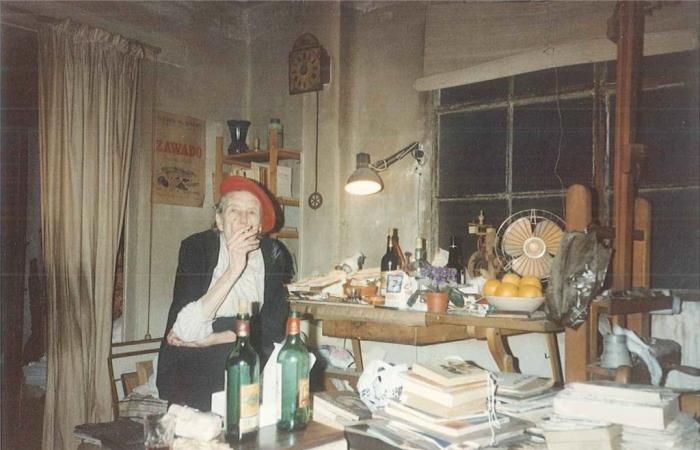She was born in London at the beginning of the 20th century with the name of Freda Marjorie Clarence Lamb and if anyone is looking for a unique woman who has not looked like any other, it is this one, look no further. It is not known at what age and for what reason she called herself Beppo. She may have adopted that nickname because that is what Lord Byron’s cat was called. She was tall, lanky like a bag of bones, with a protruding beret and a silk bow on her sternum, all of her well smoked by a perennial cigarette between her fingers. She had her tongue always ready to scorn if she didn’t like someone. Sometimes the insult was gratuitous. “You son of a bitch” was the least she said to open her mouth, with a London slum accent that resonated on her palate. Thus she created a no man’s land around her, to which only the men she admired entered, never women.
Although he used to appear late at night in the bars of old Madrid where the flamencos roamed and he could spend hours in front of a glass of always-renewable wine at the counter chatting with his idol Pepe el de la Matrona or hanging around the cafe Gijón between cursed poets and shipwreck; even though he only drank red wine and never in his life tasted a Coca Cola, She hated with all her soul that you took her for a bohemian. That word reminded her of her father, who walked around the bars of London drunk passing his cap after scratching with the violin while her mother was locked up at home.
Turning 18 helped her one morning leave her bed empty, abandon her family, jump over the fence, fly to Paris and fall into the heart of Montparnasse as one of those nymphs attracted by avant-garde artists. For drunk she had already had her father, so she did not let harsh alcohol into her biography. Her greatest aspiration was to become a model and reign naked on the bare cots of the painters’ workshops. Kiki de Montparnasse, who was the lover of Fujita and Man Ray, was the queen, but very soon Beppo made a place for herself among that troop. He met Brancusi, Pascin and Modigliani, who had arrived from Italy as a sculptor and only because wood, marble or granite were very expensive did he switch to painting. One day the artist asked Beppo to pose for a sculpture. He wanted to carve it out of wood and for that he stole a sleeper from the subway track at the Barbès-Rochechouart station. Beppo helped him jump over the fence. This theft was repeated often. That’s why for a time Modigliani’s wooden sculptures were all the same size and so stylized. That sculpture has disappeared. It may have been used as firewood to heat the cubicle in the Place de Ravignan, on the heights of Montmartre, where the artist lived.
During the post-Spanish war, in those desolate forties of the last century, Beppo appeared in Madrid to visit the Tunisian prince Abdul Wahab, a highly appreciated watercolorist whom she had married. In Seville they entered a flamenco tablao. On the stage a beautiful gypsy with silky black hair was playing the guitar. Beppo fell into rapture. At the end of the party she told her husband that she wanted to go to the dressing room to greet the artist. And until today. They escaped through the back door and the prince stayed waiting. It doesn’t seem like he cared much about getting rid of that woman. These are the stories that Beppo carried and served as his halo.
I met her in the sixties, recently arrived in Madrid. For my part, I did nothing but look for what was behind every corner and I soon learned that in those nights of the Franco era there were two routes, one led you to meet Ava Gardner and the other to bump into Beppo. An American and an English woman had broken all barriers and showed the nocturnal Spaniards what an exciting thing freedom was. In Villa Rosa, in Chicote and in the Corral de la Morería Ava Gardner gave drunken lessons; in Gayango, in Casa Patas, in the Gijón café, in Oliver and on any corner you heard Beppo’s sharp voice. You couldn’t be his friend if you drank. Coca Cola in his presence, if you wore something plastic, if you were a tacky trapped by social conventions. She liked men who dressed with decadent elegance and in women she appreciated little lace, which she assimilated to little whores. If you talked to her about feminism she howled, if you talked about psychology she said with contempt that that subject of hers in her time in Paris was studied in brothels. One night Ava Gardner and Beppo met at Oliver’s. They didn’t speak, they didn’t even look at each other. But, without a doubt, they were two roads in that Madrid, in the sixties, when the first dragonflies began to fly at night.
All the culture that goes with you awaits you here.
Subscribe
Babelia
The literary news analyzed by the best critics in our weekly newsletter
RECEIVE IT


